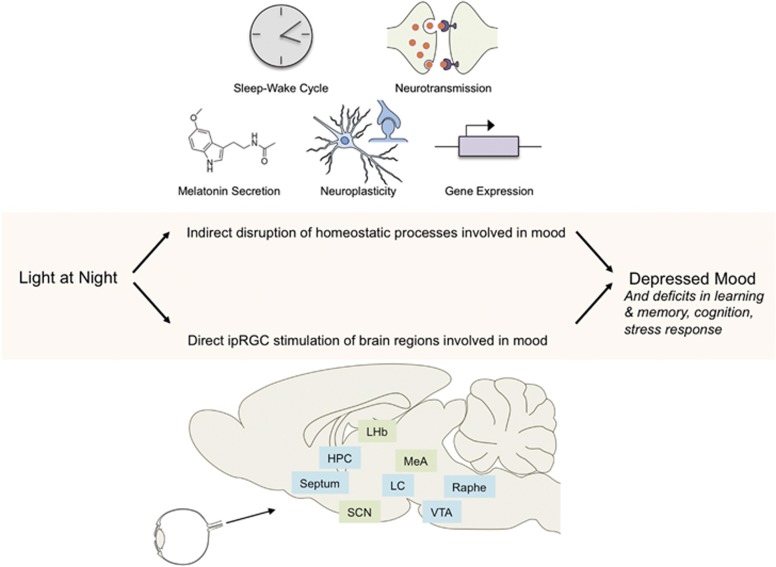Figure 4.
Mechanisms of depressed mood caused by exposure to light at night. Studies in rodent models have revealed several putative mechanisms through which exposure to artificial light at night disrupts mood. Nighttime light can indirectly affect mood by disrupting sleep, hormone secretion, neuroplasticity, neurotransmission or gene expression. In parallel, nighttime light can directly affect mood through aberrant signals transmitted from ipRGCs in the retina to brain regions involved in emotional regulation. In the panel, green brain regions represent primary ipRGC targets and blue regions represent secondary targets. HPC, hippocampus; ipRGC, intrinsically photosensitive retinal ganglion cells; LC, locus coeruleus; LHb, lateral habenula; MeA, medial amygdala; SCN, suprachiasmatic nucleus of the hypothalamus; VTA, ventral tegmental area.

